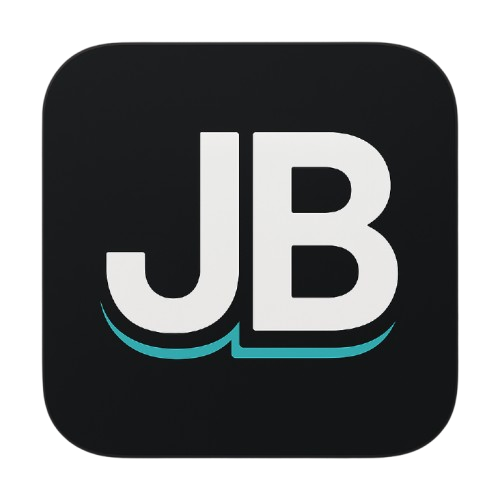Building a Complete Employee Management System in Go
A comprehensive step-by-step tutorial for learning Go fundamentals by building a real-world REST API with CRUD operations, SQLite database integration, and Excel file import functionality.
Complete Go Course: Excel to Employee API
A practical step-by-step guide to learning Go by building a real-world project.
Part 1: Go Basics - Essential Concepts
1.1 Variables and Types
Go is statically typed. Here are the most common types you'll use daily:
// Variable declaration
var name string = "John"
age := 25 // Short declaration (type inferred)
// Common types
var (
isActive bool = true
count int = 10
price float64 = 99.99
message string = "Hello"
)1.2 Structs
Structs are Go's way of creating custom types:
type Employee struct {
ID string `json:"id"`
Name string `json:"name"`
Email string `json:"email"`
Position string `json:"position"`
}
// Creating an instance
emp := Employee{
ID: "1",
Name: "John Doe",
Email: "john@example.com",
Position: "Developer",
}1.3 Functions
// Basic function
func greet(name string) string {
return "Hello, " + name
}
// Multiple return values (common in Go for error handling)
func divide(a, b float64) (float64, error) {
if b == 0 {
return 0, fmt.Errorf("cannot divide by zero")
}
return a / b, nil
}1.4 Error Handling
Go uses explicit error handling (no exceptions):
result, err := divide(10, 0)
if err != nil {
fmt.Println("Error:", err)
return
}
fmt.Println("Result:", result)1.5 Slices (Dynamic Arrays)
// Create a slice
employees := []Employee{}
// Append to slice
emp := Employee{ID: "1", Name: "John"}
employees = append(employees, emp)
// Loop through slice
for i, emp := range employees {
fmt.Printf("Index %d: %s\n", i, emp.Name)
}1.6 Maps (Key-Value Pairs)
// Create a map
userRoles := make(map[string]string)
userRoles["john@example.com"] = "admin"
// Access value
role := userRoles["john@example.com"]1.7 Pointers
// Pointers allow you to pass references
func updateName(emp *Employee) {
emp.Name = "Updated Name"
}
employee := Employee{Name: "John"}
updateName(&employee) // Pass pointer with &
fmt.Println(employee.Name) // "Updated Name"1.8 Packages and Imports
package main // Every Go file belongs to a package
import (
"fmt" // Standard library
"database/sql" // SQL package
_ "github.com/mattn/go-sqlite3" // Third-party package
)Part 2: Building the Employee API with CRUD
Step 1: Project Setup
Create your project structure:
employee-api/
├── main.go
├── database.go
├── handlers.go
└── go.mod
Initialize the Go module:
go mod init employee-apiStep 2: Install Dependencies
go get github.com/mattn/go-sqlite3
go get github.com/gorilla/muxStep 3: Database Setup (database.go)
package main
import (
"database/sql"
"log"
_ "github.com/mattn/go-sqlite3"
)
var db *sql.DB
func InitDB() {
var err error
db, err = sql.Open("sqlite3", "./employees.db")
if err != nil {
log.Fatal(err)
}
// Create table
createTableSQL := `CREATE TABLE IF NOT EXISTS employees (
id TEXT PRIMARY KEY,
name TEXT NOT NULL,
email TEXT NOT NULL,
position TEXT NOT NULL
);`
_, err = db.Exec(createTableSQL)
if err != nil {
log.Fatal(err)
}
}Step 4: API Handlers (handlers.go)
package main
import (
"encoding/json"
"net/http"
"github.com/google/uuid"
"github.com/gorilla/mux"
)
type Employee struct {
ID string `json:"id"`
Name string `json:"name"`
Email string `json:"email"`
Position string `json:"position"`
}
// CREATE - Add new employee
func CreateEmployee(w http.ResponseWriter, r *http.Request) {
var emp Employee
json.NewDecoder(r.Body).Decode(&emp)
// Generate ID if not provided
if emp.ID == "" {
emp.ID = uuid.New().String()
}
_, err := db.Exec("INSERT INTO employees (id, name, email, position) VALUES (?, ?, ?, ?)",
emp.ID, emp.Name, emp.Email, emp.Position)
if err != nil {
http.Error(w, err.Error(), http.StatusInternalServerError)
return
}
w.Header().Set("Content-Type", "application/json")
json.NewEncoder(w).Encode(emp)
}
// READ - Get all employees
func GetEmployees(w http.ResponseWriter, r *http.Request) {
rows, err := db.Query("SELECT id, name, email, position FROM employees")
if err != nil {
http.Error(w, err.Error(), http.StatusInternalServerError)
return
}
defer rows.Close()
var employees []Employee
for rows.Next() {
var emp Employee
rows.Scan(&emp.ID, &emp.Name, &emp.Email, &emp.Position)
employees = append(employees, emp)
}
w.Header().Set("Content-Type", "application/json")
json.NewEncoder(w).Encode(employees)
}
// READ - Get single employee by ID
func GetEmployee(w http.ResponseWriter, r *http.Request) {
params := mux.Vars(r)
var emp Employee
err := db.QueryRow("SELECT id, name, email, position FROM employees WHERE id = ?", params["id"]).
Scan(&emp.ID, &emp.Name, &emp.Email, &emp.Position)
if err != nil {
http.Error(w, "Employee not found", http.StatusNotFound)
return
}
w.Header().Set("Content-Type", "application/json")
json.NewEncoder(w).Encode(emp)
}
// UPDATE - Update employee
func UpdateEmployee(w http.ResponseWriter, r *http.Request) {
params := mux.Vars(r)
var emp Employee
json.NewDecoder(r.Body).Decode(&emp)
_, err := db.Exec("UPDATE employees SET name=?, email=?, position=? WHERE id=?",
emp.Name, emp.Email, emp.Position, params["id"])
if err != nil {
http.Error(w, err.Error(), http.StatusInternalServerError)
return
}
emp.ID = params["id"]
w.Header().Set("Content-Type", "application/json")
json.NewEncoder(w).Encode(emp)
}
// DELETE - Delete employee
func DeleteEmployee(w http.ResponseWriter, r *http.Request) {
params := mux.Vars(r)
_, err := db.Exec("DELETE FROM employees WHERE id=?", params["id"])
if err != nil {
http.Error(w, err.Error(), http.StatusInternalServerError)
return
}
w.WriteHeader(http.StatusNoContent)
}Step 5: Main Application (main.go)
package main
import (
"fmt"
"log"
"net/http"
"github.com/gorilla/mux"
)
func main() {
// Initialize database
InitDB()
defer db.Close()
// Setup router
router := mux.NewRouter()
// Define routes
router.HandleFunc("/employees", GetEmployees).Methods("GET")
router.HandleFunc("/employees/{id}", GetEmployee).Methods("GET")
router.HandleFunc("/employees", CreateEmployee).Methods("POST")
router.HandleFunc("/employees/{id}", UpdateEmployee).Methods("PUT")
router.HandleFunc("/employees/{id}", DeleteEmployee).Methods("DELETE")
// Start server
fmt.Println("Server starting on port 8080...")
log.Fatal(http.ListenAndServe(":8080", router))
}Step 6: Run and Test the API
# Run the application
go run .
# Test with curl
# CREATE
curl -X POST http://localhost:8080/employees \
-H "Content-Type: application/json" \
-d '{"name":"John Doe","email":"john@example.com","position":"Developer"}'
# READ ALL
curl http://localhost:8080/employees
# READ ONE
curl http://localhost:8080/employees/{id}
# UPDATE
curl -X PUT http://localhost:8080/employees/{id} \
-H "Content-Type: application/json" \
-d '{"name":"John Updated","email":"john@example.com","position":"Senior Developer"}'
# DELETE
curl -X DELETE http://localhost:8080/employees/{id}Part 3: Excel Import Feature
Step 1: Install Excel Library
go get github.com/xuri/excelize/v2Step 2: Create Excel Import Function
Create a new file excel.go:
package main
import (
"bytes"
"encoding/json"
"fmt"
"net/http"
"github.com/google/uuid"
"github.com/xuri/excelize/v2"
)
type ExcelEmployee struct {
Name string `json:"name"`
Email string `json:"email"`
Position string `json:"position"`
}
func ImportEmployeesFromExcel(filename string) error {
// 1. Open Excel file
f, err := excelize.OpenFile(filename)
if err != nil {
return fmt.Errorf("error opening file: %v", err)
}
defer f.Close()
// 2. Read rows from first sheet
sheetName := f.GetSheetName(0)
rows, err := f.GetRows(sheetName)
if err != nil {
return fmt.Errorf("error reading rows: %v", err)
}
// 3. Convert to slice of structs
var employees []Employee
// Skip header row (index 0)
for i, row := range rows {
if i == 0 {
continue // Skip header
}
// Ensure we have all columns
if len(row) < 3 {
continue
}
// Create employee with generated ID
emp := Employee{
ID: uuid.New().String(), // Generate new UUID
Name: row[0],
Email: row[1],
Position: row[2],
}
employees = append(employees, emp)
}
// 4. Convert to JSON for viewing (optional)
jsonData, err := json.MarshalIndent(employees, "", " ")
if err != nil {
return fmt.Errorf("error converting to JSON: %v", err)
}
fmt.Println("Extracted Data:")
fmt.Println(string(jsonData))
// 5. Loop through and save each employee to database
for i, emp := range employees {
err := saveEmployee(emp)
if err != nil {
fmt.Printf("Error saving employee %d (%s): %v\n", i+1, emp.Name, err)
continue
}
fmt.Printf("✓ Saved employee %d: %s (ID: %s)\n", i+1, emp.Name, emp.ID)
}
fmt.Printf("\nSuccessfully imported %d employees!\n", len(employees))
return nil
}
func saveEmployee(emp Employee) error {
_, err := db.Exec(
"INSERT INTO employees (id, name, email, position) VALUES (?, ?, ?, ?)",
emp.ID, emp.Name, emp.Email, emp.Position,
)
return err
}Step 3: Add Import Command to Main
Update main.go:
package main
import (
"fmt"
"log"
"net/http"
"os"
"github.com/gorilla/mux"
)
func main() {
// Initialize database
InitDB()
defer db.Close()
// Check for import command
if len(os.Args) > 1 && os.Args[1] == "import" {
if len(os.Args) < 3 {
fmt.Println("Usage: go run . import <excel-file>")
return
}
err := ImportEmployeesFromExcel(os.Args[2])
if err != nil {
log.Fatal(err)
}
return
}
// Setup router
router := mux.NewRouter()
// Define routes
router.HandleFunc("/employees", GetEmployees).Methods("GET")
router.HandleFunc("/employees/{id}", GetEmployee).Methods("GET")
router.HandleFunc("/employees", CreateEmployee).Methods("POST")
router.HandleFunc("/employees/{id}", UpdateEmployee).Methods("PUT")
router.HandleFunc("/employees/{id}", DeleteEmployee).Methods("DELETE")
// Start server
fmt.Println("Server starting on port 8080...")
log.Fatal(http.ListenAndServe(":8080", router))
}Step 4: Create Sample Excel File
Create employees.xlsx with this structure:
| Name | Position | |
|---|---|---|
| John Doe | john@example.com | Developer |
| Jane Smith | jane@example.com | Manager |
| Bob Johnson | bob@example.com | Designer |
Step 5: Run the Import
# Import employees from Excel
go run . import employees.xlsx
# Start the API server
go run .
# Verify imported data
curl http://localhost:8080/employeesComplete Project Structure
employee-api/
├── main.go # Entry point and routing
├── database.go # Database initialization
├── handlers.go # CRUD API handlers
├── excel.go # Excel import functionality
├── employees.xlsx # Sample Excel file
├── employees.db # SQLite database (auto-created)
└── go.mod # Dependencies
Key Concepts Review
✅ Variables & Types - Declaring and using Go data types
✅ Structs - Creating custom data structures
✅ Functions - Writing reusable code blocks
✅ Error Handling - Go's explicit error checking
✅ Slices - Working with dynamic arrays
✅ Loops - Using for and range
✅ Pointers - Passing references
✅ Packages - Organizing code
✅ HTTP APIs - Building REST endpoints
✅ Database - SQL operations
✅ JSON - Encoding and decoding
✅ File Processing - Reading Excel files
Next Steps
- Add validation for email format
- Add duplicate email checking
- Implement pagination for GET all employees
- Add authentication middleware
- Create unit tests
- Deploy to production
Congratulations! You've built a complete Go application with API and Excel integration! 🎉

